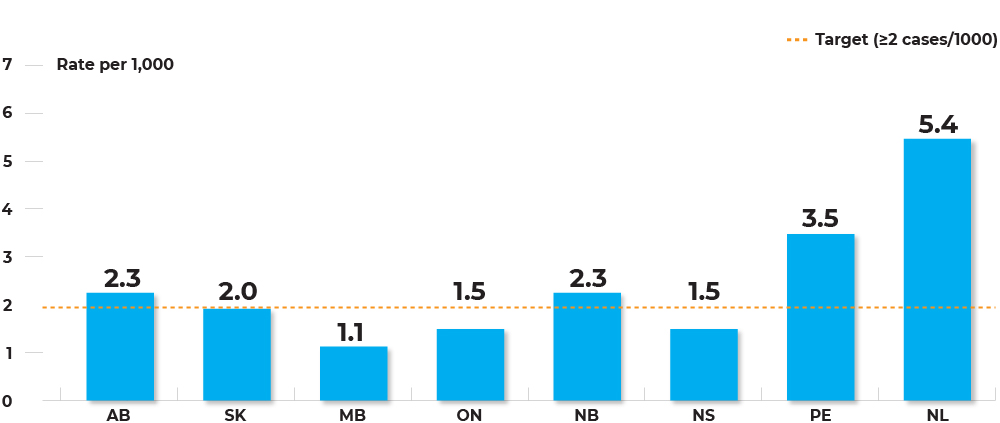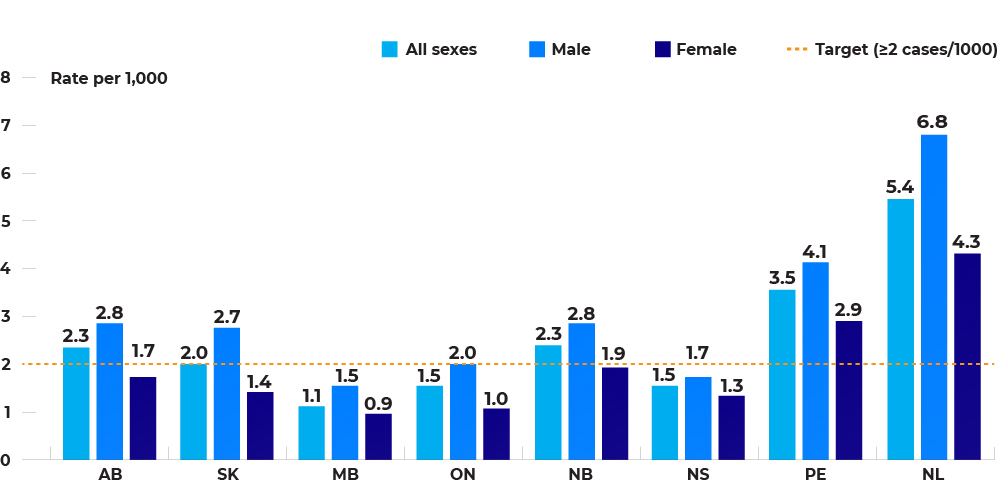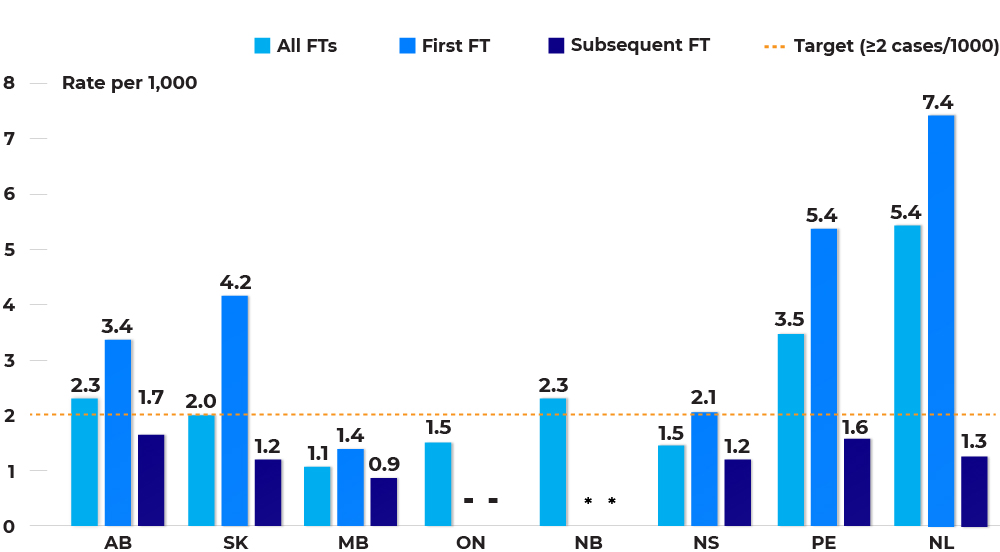Program invasive colorectal cancer detection rate
Why is this important? The invasive colorectal cancer detection rate among individuals screened in the program helps to assess the effectiveness of a screening program over time. Detection rates depend on many factors, including the sensitivity of the screening test and the ability to provide timely, high-quality follow-up procedures to all individuals with abnormal screening results. This indicator should also be correlated with the stage distribution of screen-detected cancers.
Indicator definition: The number of people (per 1000 screened) who are diagnosed with colorectal cancer confirmed by pathology from a follow-up colonoscopy performed within 6 months of an abnormal screening fecal test screened within the measurement timeframe.
Target: ≥ 2 invasive colorectal cancers per 1000 people screened
Indicator calculation:
Numerator: The number of people with invasive colorectal cancer on pathology from a follow-up colonoscopy performed within 6 months of an abnormal fecal test result obtained within the measurement timeframe.
Denominator: The number of people having one or more successful fecal tests processed by the laboratory within the measurement timeframe.
How does 2017/18 compare to 2013/14? Compared with data in the colorectal cancer screening report for 2013-14 where 1.0 – 7.7 cancers were detected per 1,000 screens, program invasive colorectal cancer detection rate remained relatively stable in most jurisdictions in 2017/18.
Additional considerations: For this indicator, screening years 2016 – 2017 are used to allow for time for follow-up and diagnosis.
Detection rate (per 1,000) of invasive colorectal cancers through programmatic screening among individuals aged 50-74, by jurisdiction, screening year 2016 – 2017

Text description and footnotes
The invasive cancer detection rate ranged from 1.1 per 1,000 in Manitoba to 5.4 per 1,000 in Newfoundland and Labrador. The target of two or more colorectal cancers detected per 1,000 individuals was achieved in 5 of the 8 jurisdictions providing data for this indicator.
Detection rate (per 1,000) of invasive colorectal cancers through programmatic screening among individuals aged 50-74, by jurisdiction and sex, screening year 2016 – 2017

Text description and footnotes
More invasive cancers were detected in males than females in all jurisdictions.
Detection rate (per 1,000) of invasive colorectal cancers through programmatic screening among individuals aged 50-74, by jurisdiction and age group, screening year 2016 – 2017

Text description and footnotes
More invasive cancers were detected in older age groups in almost all provinces, with the highest detection rate being 11.4 per 1,000 in 70-74 year-olds in Newfoundland and Labrador. The likelihood of developing colorectal cancer increases in older age groups, and it is expected that screening would detect more cancers in older age groups.
Detection rate (per 1,000) of invasive colorectal cancers through programmatic screening among individuals aged 50-74, by jurisdiction and first or subsequent round of fecal test, screening year 2016 – 2017

Text description and footnotes
In all jurisdictions that provided data, invasive colorectal cancer detection rate is higher in first fecal tests compared to subsequent fecal tests. This is expected because first screens will detect any cancer that has developed up to that point, sometimes over many years, while subsequent screens will only identify cancers that have become detectable since the previous screen.
